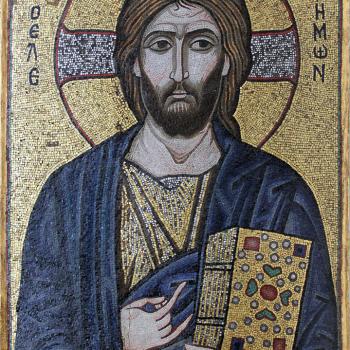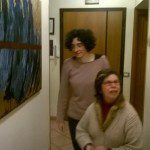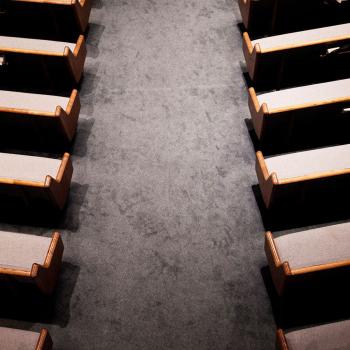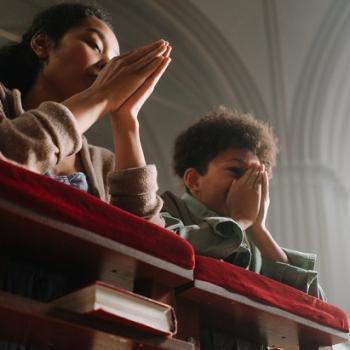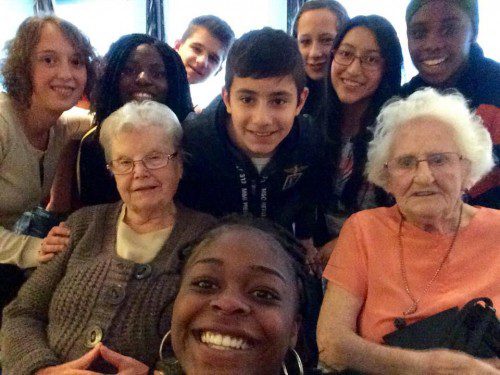
by Zeger Polhuijs
This is the second in a series of looks at the works of the Community of Sant’Egidio, in Europe. In the US, the Community of Sant’Egidio can be found in New York, Boston, and Washington DC.
In 2012, the popular Algerian singer Khaled released the music video of his hit single ‘C’est la vie’. The video celebrates the positive attitudes and energies of young migrants in Europe; it celebrates diversity, energy, joy, ambition, and friendships and relationships across ethnic boundaries.
The hope shining from the faces of the young people in the video seemed to reflect the aspirations of the Arab Spring. A generation of young, educated and jobless men and women wanted to make something out of their lives and their countries, and stood up to ask for the opportunities to do so with dignity.
Buoyant optimism seemed all around.
A few years later, the positive vibe of ‘C’est la vie’ seems hard to find. Syria’s branch of the Arab Spring has descended into a civil war which gave an opportunity for the rise of IS, whose cruelties — many committed by young European men — are shocking the world.
Meanwhile in here Europe, there’s a conflict on our eastern borders, which — in Western Europe — had an especially traumatic impact on the Dutch population when passenger flight MH-17 was shot down above Eastern Ukraine on July 17, 2014. And last month, the city of Paris was shaken to its core by a series of brutal terrorist attacks. If anything could capture the ominous feelings that flow from these events, it might be the music video of Indila’s ‘Dernière Danse’ of 2013, in which we see dark clouds over Europe, storm clouds gathering over Paris.
What is to become of the smiling young faces of ‘C’est la vie’?
The Community of Sant’Egidio is not a charitable organization of successful people doing some nice things for unfortunate people. Neither is it “the United Nations of Trastevere”, as a journalist once wrote, as if the organization tries to fix all conflicts with a self-appointed role of arbitrator. Rather, it is a community which first of all exists for prayer and friendship with the poor.
The fascinating thing is that the the Community of Sant’Egidio’s witness is not only in what she does, but also in what she itself is. The Community does not only support migrants who are in need, she does not only seek friendship with them, but also lets those who wish to, join the community itself and share in its life and work. As is often said within the Community, ‘no one is too poor to help another person’. No one is too marginal. No one is an ‘other’ who can only receive aid, but not inclusion.
In my experiences with Sant’Egidio, I have seen examples of Europe’s ethnically diverse youngsters represented among its members. In Amsterdam, a girl from Uganda wraps Christmas presents for the homeless together with a Syrian girl whose family moved to the Netherlands in the early 2000’s. In Antwerp, a boy from Rwanda cooks and eats with the residents of the “Simeon & Hannah” small-scale elderly home, while a young woman born in the Ukraine leads one of the “School of Peace” children groups in the city’s peripheral neighbourhoods.
Their everyday and joyful examples present in real life something of the atmosphere one senses in the ‘C’est la vie’ video. Their example tells me that there is hope for Europe’s young people, for the migrants, for Europe’s various ethnic groups and multicultural neighbourhoods. Not because Sant’Egidio is going to save the world. But because she contributes to building the kind of society in which I would want to live. A society which will make it through the storm and which will see light shine on its cities, as in the end of the video of ‘Dernière Danse’.
This week, I will fly to Rome to spend a week with the Comunità di Sant’Egidio in that city and begin my first fieldwork experience of my research on the growth and expansion of this lay movement. I am, of course, not only a student and researcher but also someone who is personally involved in Amsterdam’s small but promising community, so experiencing Sant’Egidio’s “mother community” is very exciting. The ethnographic research method of “participant observation,” which I learned during my studies in Social and Cultural Anthropology, will help me to — as I conduct fieldwork in Rome, Antwerp, and Amsterdam during various moments in the next few months — trace the path of the Community from the slums of Rome in 1968 to the reconsecration of a church in Amsterdam where the Eucharist is celebrated and friendship with the homeless is developed today.
As I go along, I will share with you some of the stories of hope I’ll encounter along the way.
 Zeger Polhuijs is a Dutch student and Catholic blogger, and involved with the Community of Sant’Egidio in Amsterdam. Over the next months he will conduct fieldwork in the Sant’Egidio Communities in Rome, Antwerp and Amsterdam for his thesis research.
Zeger Polhuijs is a Dutch student and Catholic blogger, and involved with the Community of Sant’Egidio in Amsterdam. Over the next months he will conduct fieldwork in the Sant’Egidio Communities in Rome, Antwerp and Amsterdam for his thesis research.






